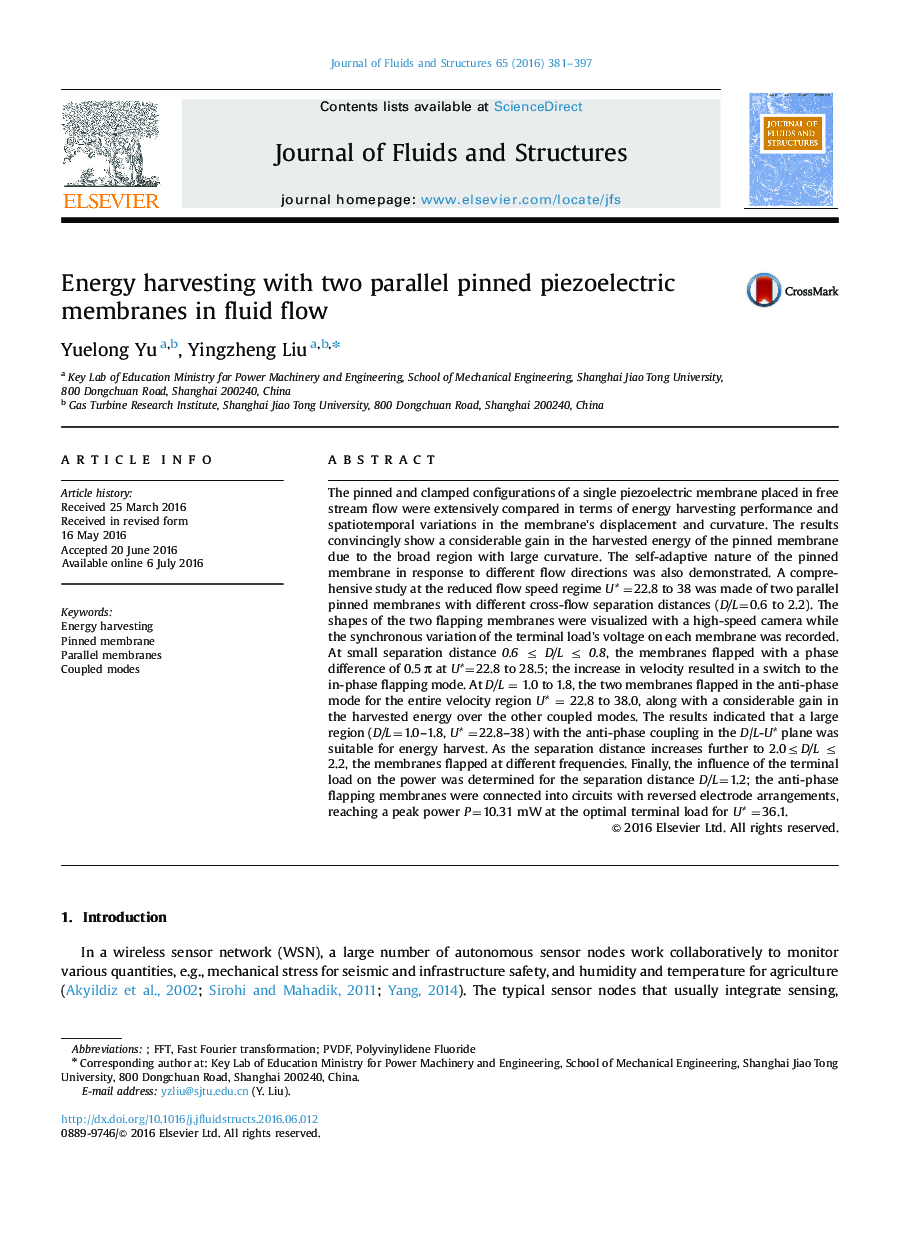| Article ID | Journal | Published Year | Pages | File Type |
|---|---|---|---|---|
| 792249 | Journal of Fluids and Structures | 2016 | 17 Pages |
The pinned and clamped configurations of a single piezoelectric membrane placed in free stream flow were extensively compared in terms of energy harvesting performance and spatiotemporal variations in the membrane's displacement and curvature. The results convincingly show a considerable gain in the harvested energy of the pinned membrane due to the broad region with large curvature. The self-adaptive nature of the pinned membrane in response to different flow directions was also demonstrated. A comprehensive study at the reduced flow speed regime U* =22.8 to 38 was made of two parallel pinned membranes with different cross-flow separation distances (D/L=0.6 to 2.2). The shapes of the two flapping membranes were visualized with a high-speed camera while the synchronous variation of the terminal load's voltage on each membrane was recorded. At small separation distance 0.6 ≤ D/L ≤ 0.8, the membranes flapped with a phase difference of 0.5 π at U*=22.8 to 28.5; the increase in velocity resulted in a switch to the in-phase flapping mode. At D/L = 1.0 to 1.8, the two membranes flapped in the anti-phase mode for the entire velocity region U* = 22.8 to 38.0, along with a considerable gain in the harvested energy over the other coupled modes. The results indicated that a large region (D/L=1.0–1.8, U* =22.8–38) with the anti-phase coupling in the D/L-U* plane was suitable for energy harvest. As the separation distance increases further to 2.0≤D/L ≤ 2.2, the membranes flapped at different frequencies. Finally, the influence of the terminal load on the power was determined for the separation distance D/L=1.2; the anti-phase flapping membranes were connected into circuits with reversed electrode arrangements, reaching a peak power P=10.31 mW at the optimal terminal load for U* =36.1.
